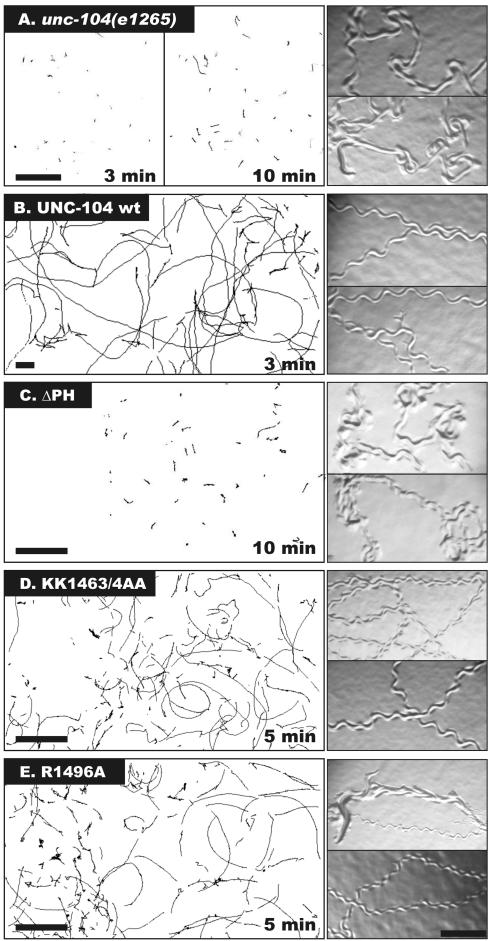Figure 2.
The effects of PH domain deletion and point mutations on the ability of UNC-104 constructs to rescue worm movement. Left panels: The movement of unc104(e1265) worms or unc-104 animals expressing wild-type (wt) UNC-104, or UNC-104 with a deletion of either the PH domain (ΔPH) or the PH domain point mutations KK1463/4AA or R1496A. Young adult worms were placed on agar plates, and their position was recorded over an interval of either 3 min (wt), 5 min (KK1463/4AA, R1496A), or 10 min (e1265, ΔPH). The motion was tracked using a computer algorithm (MATERIAL AND METHODS). Scale bar, 4 mm. Right panels: Worm tracks on a bacterial lawn reveal the degree of coordination. unc-104 worms show coordinated movement, but expression of wt UNC-104 restores coordinated motion, as seen in the regular sinusoidal pattern of the tracks. The UNC-104ΔPH–expressing worms behave similar to the unc-104 animals, and the UNC-104KK1463/4AA or UNC-104R1496A–expressing animals display decreased velocities compared with wild type. Scale bar, 0.3 mm.

